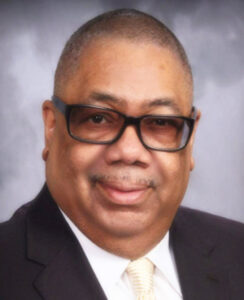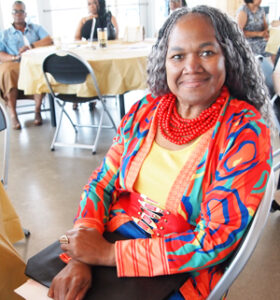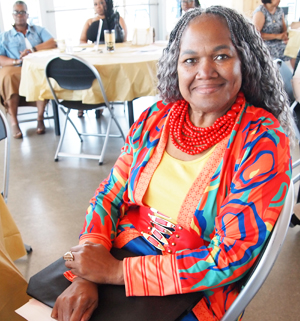
By Rev. Donald L. Perryman, Ph.D.
The Truth Contributor
The vote is precious. It is almost sacred. It is the most powerful nonviolent tool we have in a democracy. – John Lewis
The battle for Ohio’s 9th Congressional District between incumbent Democrat Marcy Kaptur and her Republican challenger Derek Martin illustrates the challenges and tensions facing election boards, making the contest one of the most closely watched races in the nation.
Kaptur currently owns a razor-thin lead of nearly 1,200 votes. However, with Lucas County accounting for approximately 4,000 of over 8,000 provisional and absentee ballots still uncounted across the district’s eight counties, the outcome is far from certain.
Adding even more drama to the crucial stakes, this race could determine who controls the U.S. House of Representatives and affect the overall balance of power in Washington D.C., casting a national spotlight on northwest Ohio.
So, I spoke with LaVera Scott, Lucas County’s top election official, to understand the Board of Election’s process and procedures, including the protections in place to preserve voter confidence.
This week, Director Scott offers a behind-the-scenes look at how democracy is safeguarded in Lucas County during pivotal moments like the 2024 election.

Perryman: What are your general reflections on how the 2024 general election went in Lucas County?
Scott: The election itself ran well, but for the first time in my 20 years here – and since early voting began – our in-person early vote numbers were higher than early vote absentee. Normally, our absentee rate is about 25 – 40 percent higher than the early vote, so a lot more people chose to come in and vote in person. This was my fifth presidential election, and it was the first time that it had ever happened. So, this election was a big change.
Perryman: Regarding partisan differences, did you see an increase in Republicans as opposed to Democrats or vice versa?
Scott: To be honest, I don’t focus on that during general elections because it’s not part of the reporting criteria we’re required to submit. However, since the number of registered Republicans increased after the primary, it’s natural that more Republicans voted in this election in Lucas County.
Perryman: Other than the increase of in-person early votes, how would you assess the turnout in this election compared to previous cycles?
Scott: Overall turnout was 60-something percent, but we still have absentee ballots that are still coming in yesterday and today that were counted that are not in that percentage. We have about almost 4,500 provisional ballots that aren’t counted in that. We did have a lot of people who probably had not voted since the last presidential election.
So, the overall total was a little lower than the 2020 election. Still, as I stated, the 2020 numbers I looked at are based upon their total numbers after provisionals are added in, so it may change. I can’t say it’s a lot lower until we know how many provisional ballots there are.
Perryman: Please assess the turnout in underrepresented communities.
Scott: We don’t break down data by ward or precinct at this level. On Election Day, I focus on polling numbers, such as how many voters came to specific locations compared to their registered voters. For example, by noon, 63 percent of voters at Monclova locations had already voted, and Sylvania was over 50 percent, indicating many voted in the morning. In contrast, turnout percentages were lower in central city locations such as Martin Luther King School, for example, when comparing eligible voters to actual turnout.
Perryman: Did your office experience any issues with voting equipment?
Scott: The only issue we encountered was voters, I assume accidentally, inserting “I voted” stickers into the machines while feeding their ballot cards, which caused three machines to malfunction and require replacement.
After monitoring our system, I also delivered extra ballots to five locations, which alerts me when polling places are running low. Some locations experienced long lines just due to high turnout and gave people paper ballots instead of ballot cards. That’s not ideal, but at least the people were allowed to vote.
Perryman: Election security has been a hot topic. What specific measures did your office take to ensure the security and integrity of the election?
Scott: According to state law, Lucas County sheriffs serve as our law enforcement on Election Day. So, if an issue arises at a polling location, we contact the Sheriff’s office. Given the heated political climate, we coordinated with the sheriff’s department months in advance to have officers on standby in case of security threats. Sheriffs were stationed at our main office and dispatched as needed; for example, one was sent to address a disruptive voter.
My priority is always ensuring the safety of both workers and voters, so we took extensive measures to prepare. We collaborated with the Lucas County Information Systems (LCIS) team to ensure IT support was readily available, and we obtained state and local radios for quick communication. Through months of planning, we were prepared to address both physical and cyber threats, protecting the safety of everyone involved, including our equipment, workers, voters, and infrastructure.
Perryman: Did you experience any technology or infrastructure disruptions?
Scott: Thankfully, all infrastructure power outages occurred before Election Day. During early voting, the center lost power twice, requiring us to operate with generators and floodlights. Despite the dim lighting, voters were still able to cast their ballots without issue. Having a contingency plan, including backup generators, tested machines, and additional resources on standby, made it easier to address these challenges. I’m grateful we didn’t need to use all the resources we had prepared.
Perryman: Were there any reports of voter fraud or other irregularities?
Scott: I haven’t encountered any voter fraud, but the election isn’t officially over yet, and we’re still processing provisional ballots. Part of this process includes ensuring no one voted twice -whether on a machine or in another county. These checks are part of the post-election process and must be completed before certification of the results.
Perryman: This question might pertain to swing states, but even nationally, some speculate that the reported 65 million Democratic votes seem like a dramatic undercount, given the high turnout, especially with university students around the nation waiting three to four hours to vote. What are your thoughts?
Scott: I didn’t experience anything like that. Only two locations had voters in the building after polls closed, and they were already in line, so they were able to vote. Most of our highest turnout occurred in the morning, and I’d question numbers too if voters were waiting 3–4 hours.
For example, one of our vote locations reported unusually low check-in numbers despite long morning lines. When I reviewed the data, I noticed the MiFi wasn’t transmitting to our system, so I had a rover verify and resolve it.
So, checks are essential. If numbers seem off, it’s critical to investigate to ensure they reflect actual voter activity. I can’t comment on others without knowing their system or processes, but significant discrepancies should always raise a red flag.
Perryman: Does your office, or others, have checks and balances to prevent issues if a partisan individual were to infiltrate the system? Given the challenges in attracting election and poll workers, could there be opportunities for misconduct?
Scott: In Ohio, all election-sensitive tasks are conducted by bipartisan teams to ensure integrity. For example, absentee ballots are opened, flattened, and scanned by teams with representatives from both parties. Even our IT director, who scans ballots, must have a member of the opposite party present. The same applies to transporting election materials. Our polling location managers must be accompanied by someone from the opposite party when delivering items, which are then checked in by bipartisan teams. Sheriff’s deputies also escort materials with bipartisan teams. This “two-by-two” approach ensures transparency and prevents opportunities for misconduct. Unlike some states, Ohio requires election workers handling sensitive materials to declare their party affiliation, further reinforcing accountability.
Perryman: One high-profile election in our area has been “called,” but not all ballots – particularly absentee and provisional – have been counted. How do you ensure their accuracy, and what logistical challenges delay their processing? For instance, when do you expect the Kaptur/Merrin race results?
Scott: By law, provisional ballots cannot be counted until after the election. Teams process the affirmation statements on the envelopes, but the ballots cannot be opened until the board votes on their validity during a legally mandated provisional meeting. Only after this can the ballots be counted.
This is not a delay but a required process, which is why results in Ohio are not official until certification. This year, all boards must certify and send results to the Secretary of State by November 20th. For races like Marcy Kaptur vs. Derrick Merrin, final results will be available on certification day, November 20th.
Perryman: Finally, as Lucas County’s top election official, how do you balance maintaining election security with ensuring accessible voting for all eligible voters, especially amid legal debates over voter ID laws and mail-in voting access?
Scott: As a former officer of the Ohio Elections Officials Association and co-chair of the legislative committee for three years, I regularly reviewed legislation and advocated for voters’ rights. While I follow all laws and directives, I firmly believe in ensuring accessibility to the ballot and have spoken out against changes, like stricter ID requirements, that create unnecessary hurdles. Voting is a fundamental right, and I’ve always been vocal in advocating for access, stating that “if the system isn’t broken, it doesn’t need fixing.” My role is to balance compliance with advocating for voters’ rights in our community.
Perryman: Well said. I really appreciate you taking the time to talk to me.
Scott: Not a problem at all. You are quite welcome.
Contact Rev. Donald Perryman, PhD, at drdlperryman@enterofhopebaptist.org

